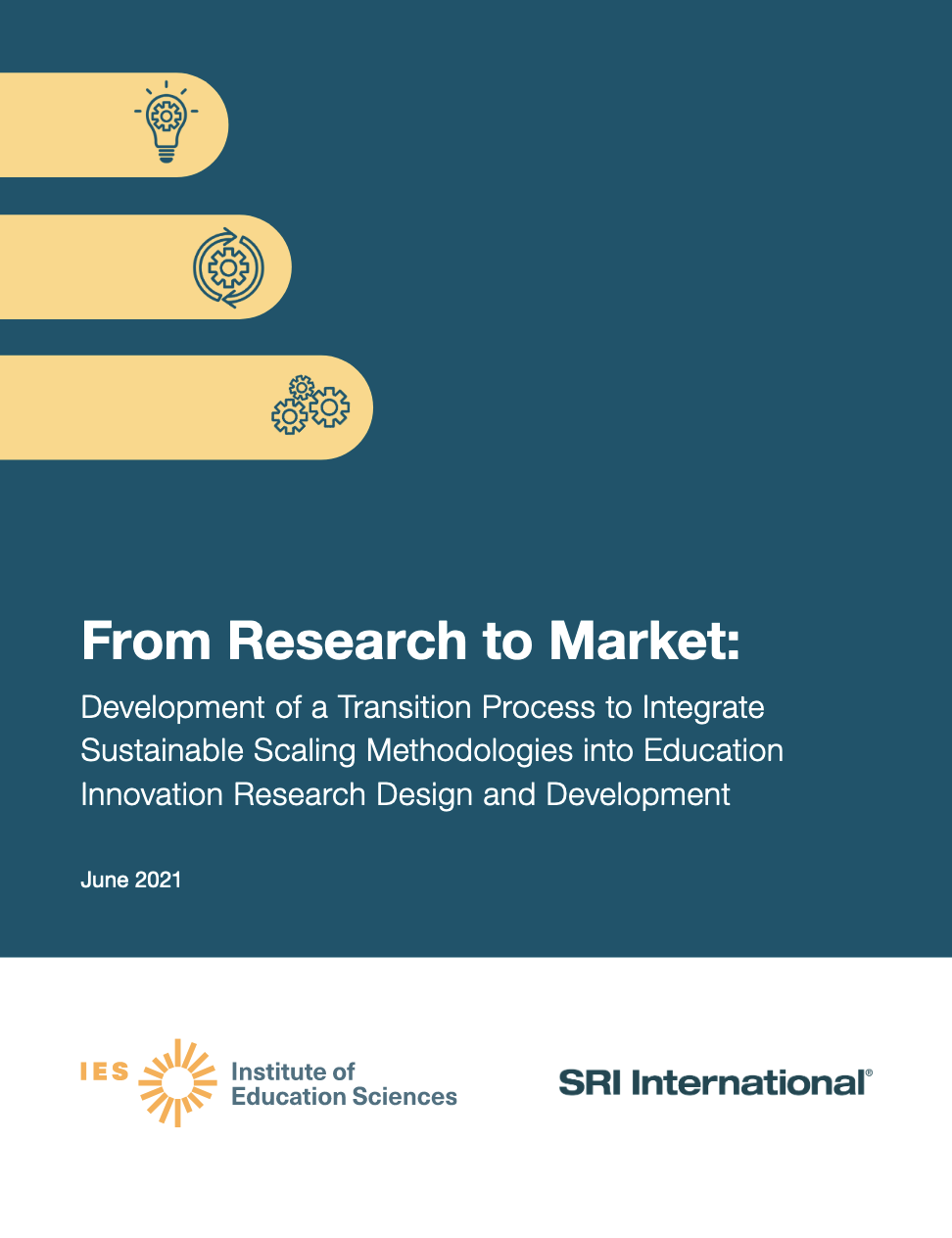Even when innovations have rigorous evidence of impact, they often are not widely adopted by the field, or their use is not sustained. To support more successful transitions of educational research to the field, SRI researchers modified its Invent-Apply-Transition (I-A-T) framework, that has been successfully used to scale research to practice in healthcare, enterprise software, and robotics, to educational contexts based on the experiences of an Advisory Council and Expert Panel Members, all with direct experience successfully scaling educational innovations.
SRI began this project by conducting a brief literature scan to identify common themes that education researchers employed in effective scale-up strategies. SRI researchers conducted semi-structured interviews with the four Advisory Council and nine Expert Panel members to gather feedback from experts in the field who have successfully scaled educational innovations on the I-A-T framework, and then used their feedback to make relevant modifications. This report introduces the I-A-T framework and how it has been modified to educational contexts. The report also describes an Embedded Entrepreneur Program model that could be used to support Institute of Education Sciences (IES) grantees to increase their probability of scaling and transitioning their innovations to the educational market by helping them analyze their needs hypotheses, product-user fit, stakeholder mapping, market differentiation, product market fit, and scaling pathway hypotheses. Our initial findings suggest that education researchers and innovators could especially benefit from attending more to three factors: (1) the feasibility/usability of the innovation (the “Convenience” component of the Performance, Reliability, Convenience, Cost [PRCC] approach), and how it would be incorporated into the operating environment of the school and district; (2) an understanding of the scope of the innovation (i.e., whether it is a product or a feature); and (3) early identification of a commercialization strategy that is aligned with the scope of the innovation. The report explains how educational researchers can benefit from following the steps outlined in the modified I-A-T framework and collaborating with entrepreneurs with demonstrated skills and dedicated time for scaling innovations. The following appendices are included: a detailed description of the I-A-T framework, a description of the Embedded Entrepreneur Pilot Program, and a literature scan.
Want to LEARN more about how to use the Invent-Apply-Transition framework? Dive deeper with the LEARN to Scale Toolkit. The toolkit provides more information, activities, and tools around creating, testing, and scaling evidence-based educational products with the I-A-T framework.
Categories: Resource
Tags: Application Innovation Transition

